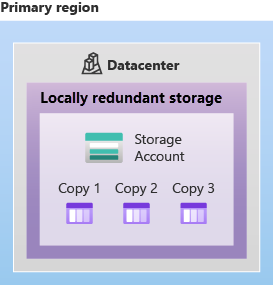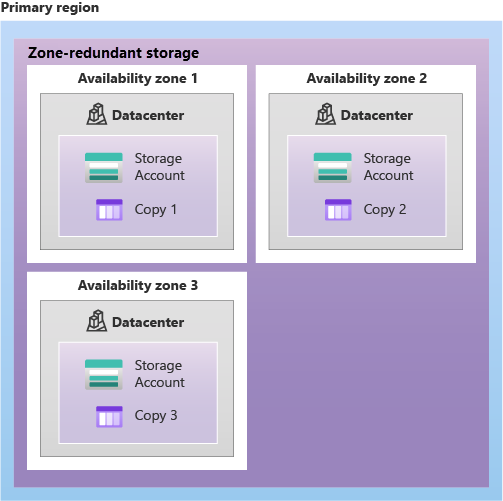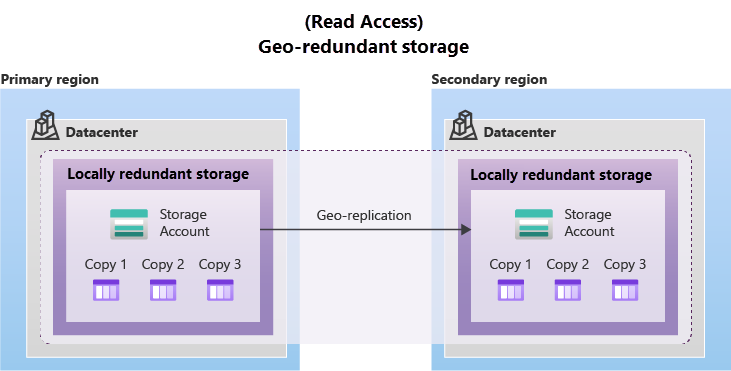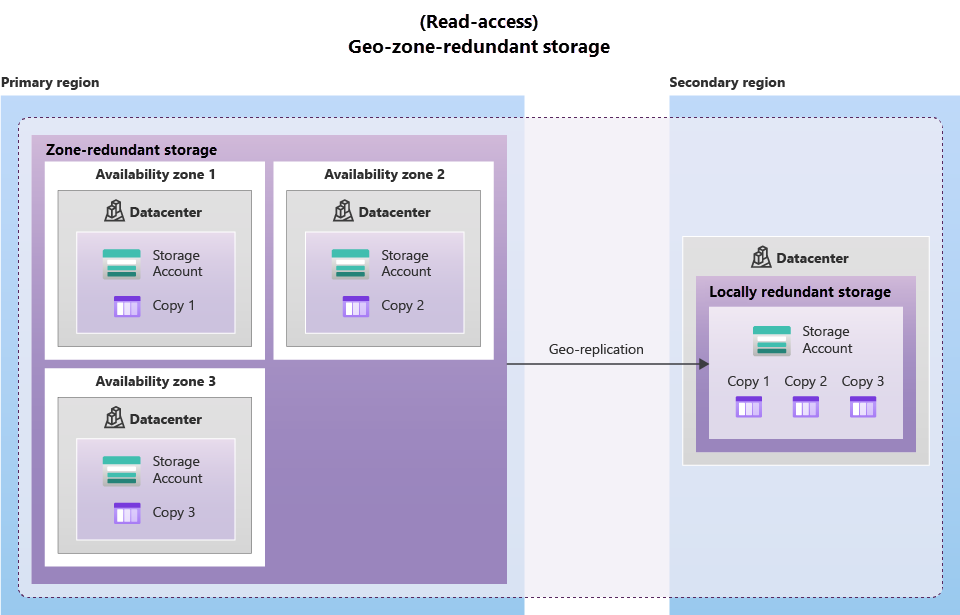Azure storage redundancy
SOURCES OF IMAGES: https://learn.microsoft.com/en-us/training/modules/describe-azure-storage-services/3-redundancy (opens in a new tab)
Azure storage always stores multiple backup of my data. (Redundancy)
Types of redundancy
Redundancy options in primary region
Data is always stored three times in the primary region. There I can choose between locally redundant storage (LRS) and zone-redundant storage (ZRS).
Locally redundant storage (LRS)
It saves three copies of the data in a single data center in the primary region. It provides at least 11 nines of durability (99.999999999%) of objects over a given year.

It is the cheapest option. But also the least reliable. It protects agains:
- Hardware failures
- Network failures
- Rack failures
But in case of flooding or fire in the data center it is not safe!
Zone-redundant storage (ZRS)
It replicates the data syncronously across three storage clusters in the primary region. It provides at least 12 nines of durability (99.9999999999%) of objects over a given year.

The data is still accesible for read and write operations, also when a zone gets unavailable.
Microsoft recommends ZRS for:
- Applications that require high availability
- Restricting replication of data to meet governance requirements
Redundancy options in secondary region
Used for applications requiring high durability and availability.
In that case it is also durable agains catastrophic failures in the primary region.
Geo-redundant storage (GRS)
It is similair to LRS, but it additionally also replicates asynchronously the data to a single physical location in a secondary region. It provides at least 16 nines of durability (99.9999999999999999%) of objects over a given year.

Geo-zone-redundant storage (GZRS)
It is similair to ZRS, but it additionally also replicates the data to a single physical location in a secondary region (LRS).

Microsoft recommends GZRS for:
- Requiring maximum consistency
- Maximum durability
- Maximum availability
- Performance
- Resilience for disaster recovery
Read Access
With the read-access geo-redundant storage (RA-GRS) and read-access geo-zone-redundant storage (RA-GZRS) I can read the data from the secondary region, even if the primary is running optimal. Geo-redundant storage ad Geo-zone-redundant storagecan not read or written to in the secondary region.
REMEMBER: Data in the secondary region might not be up-to-date (RPO, Recovery Point Objective)!